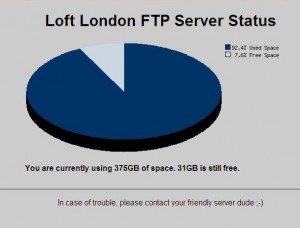 With the recent end-of-life announcement it becomes clear that WordPress isn’t going to support PHP 5.1.6. for much longer anymore.
With the recent end-of-life announcement it becomes clear that WordPress isn’t going to support PHP 5.1.6. for much longer anymore.
CentOS 5 however comes pre-compiled with PHP 5.1.6 and there are no plans to change this in the current version.
For simple folk like me it’s unimaginable to re-compile the entire OS from source or switch to a different distribution altogether. yum doesn’t help much by default – unless you’re looking in the right repositories.
Help is at hand, courtesy of the 1and1 Knowledge Base. Without further ado, here’s how to upgrade PHP on CentOS 5:


 So I’ve expanded my server arsenal to a fifith machine with
So I’ve expanded my server arsenal to a fifith machine with